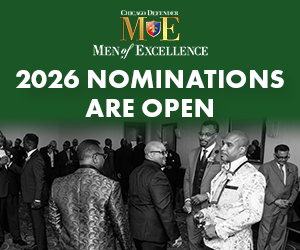Three families recently moved into these homes in Roseland just before Christmas, marking the start of a bold initiative to rebuild Chicago’s underserved neighborhoods (Photo courtesy of the Hope Center Foundation).
In the heart of Roseland, where vacant lots have long overshadowed the promise of community, hope has taken root. This Christmas, three Chicago families received the gift of a lifetime: new homes, keys in hand and the first steps toward generational wealth.
Linda Brown-Wilson stood outside her freshly built home, a “Welcome” banner and festive balloons swaying in the cold December breeze. For her, these keys meant more than ownership—they marked triumph over years of hardship.
“The emotions running through me right now, I can’t even describe,” she said, tears streaming. “No one knows the things I’ve been through the last four years. Even though I have these tears, they’re happy tears, they’re sad tears. But I’m just so grateful that we have a home—a key to open our own door.”

New homeowner Linda Brown-Wilson posing with her house warming gifts (Photo Credit: Tacuma Roeback)
These homes, nestled side by side, symbolize more than shelter. They are part of a larger vision spearheaded by the Hope Center Foundation, United Power for Action & Justice, and Salem Baptist Church of Chicago. This is just the beginning of a transformative initiative to build 1,000 homes on Chicago’s South Side and 1,000 more on the West Side.
Revitalizing Roseland: A Vision Comes to Life
Rev. James T. Meeks, president of the Hope Center Foundation, recounted the genesis of this bold project. “We joined United Power for Action & Justice, a group committed to building homes on vacant lots,” he said. “There was representation from the West Side and Back of the Yards, but none from Roseland. So we took on the mantle.”
The first ten lots were once parking spaces for Salem Baptist Church, a reflection of the neighborhood’s long-standing disinvestment. Now, they are the foundation for new beginnings.
“These homes will do more than house families,” Meeks emphasized. “They’ll transform neighborhoods. With 10 families on this block, we can form a block club, engage local schools and demand attention from elected officials. People bring retail. Retail brings resources. Together, we rebuild.”
Pathway to Ownership: A Journey of Faith and Perseverance

Sean Brinker calls acquiring his new home “an opportunity to walk into equity and be part of building a community” (Photo Credit: Tacuma Roeback).
The road to homeownership wasn’t easy. Over the past year, these families attended financial literacy classes, repaired credit and navigated the complexities of securing loans. For new homeowner Sean Brinker, the process was daunting but worthwhile.
“This is the best Christmas gift I’ve ever had,” Brinker said. “It’s an opportunity to walk into equity and be part of building a community. For anyone doubting if homeownership is possible, I’d say, start with your credit. Work on it. It’s not out of reach.”

Brinker, who loves to cook, in the favorite area of his new house: the kitchen (Photo Credit: Tacuma Roeback)
Shenita Muse, executive director of the Hope Center Foundation, called the experience deeply rewarding. “When we started, I never imagined the journey I’d take with these families,” she said. “This isn’t just about homes. It’s about equity, community redevelopment and creating generational wealth for Black and Brown people in disinvested areas.”
With plans to cut the home-buying process in half next year, Muse is optimistic about scaling the project. “We’re breaking ground on 25 more homes this spring. Our pipeline has over 400 prospective buyers ready to transform vacant lots into vibrant neighborhoods.”
Building a Future, One Home at a Time

James Williams Jr. in front of his new home in Roseland (Photo Credit: Tacuma Roeback).
The initiative’s broader impact stretches beyond individual families. It represents a strategic effort to reclaim Chicago’s disinvested neighborhoods, block by block. For Roseland, a community that hasn’t seen new residential construction in nearly 60 years, these homes are a harbinger of change.
As Rev. Meeks looks ahead, his vision extends beyond housing. “We’re planning a grocery store, restaurants, and more retail development. Everything goes together. This is how communities live again.”




